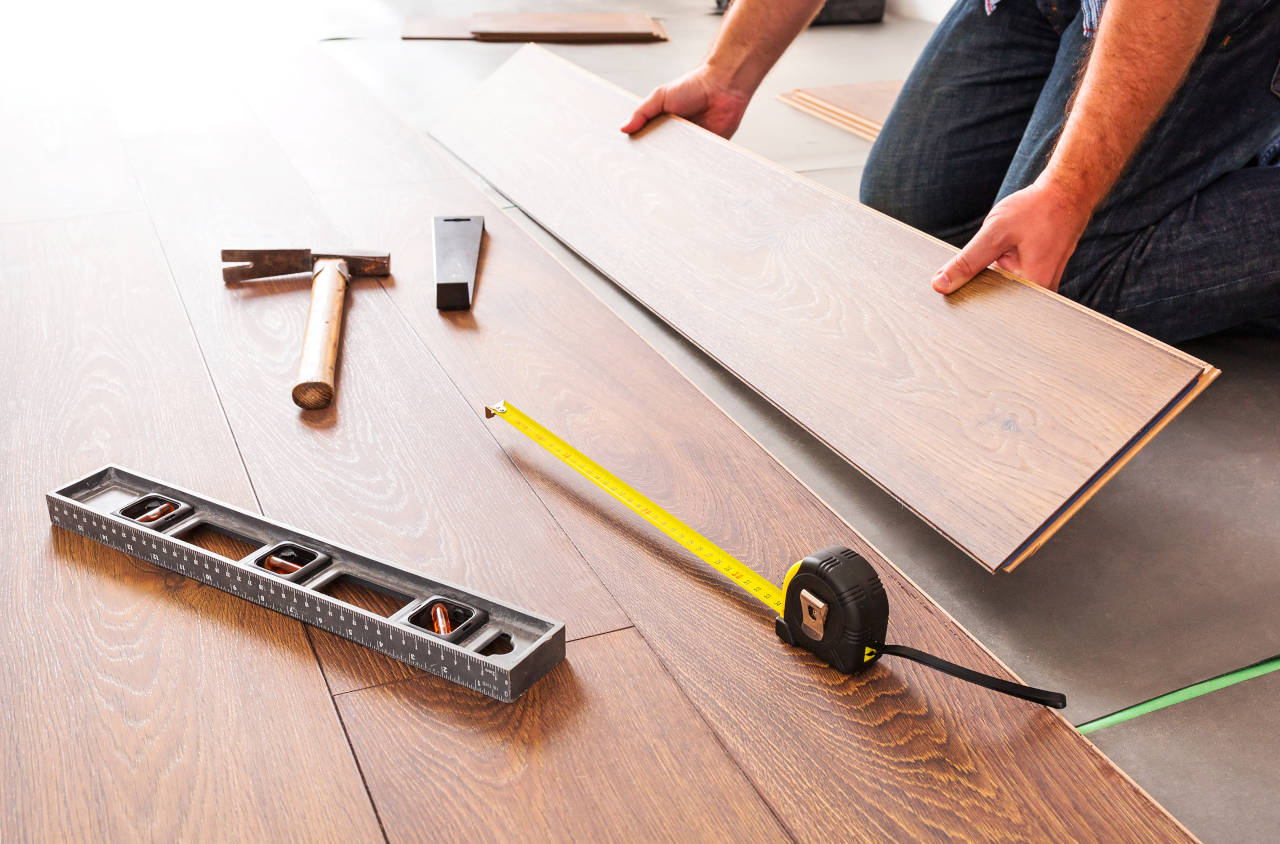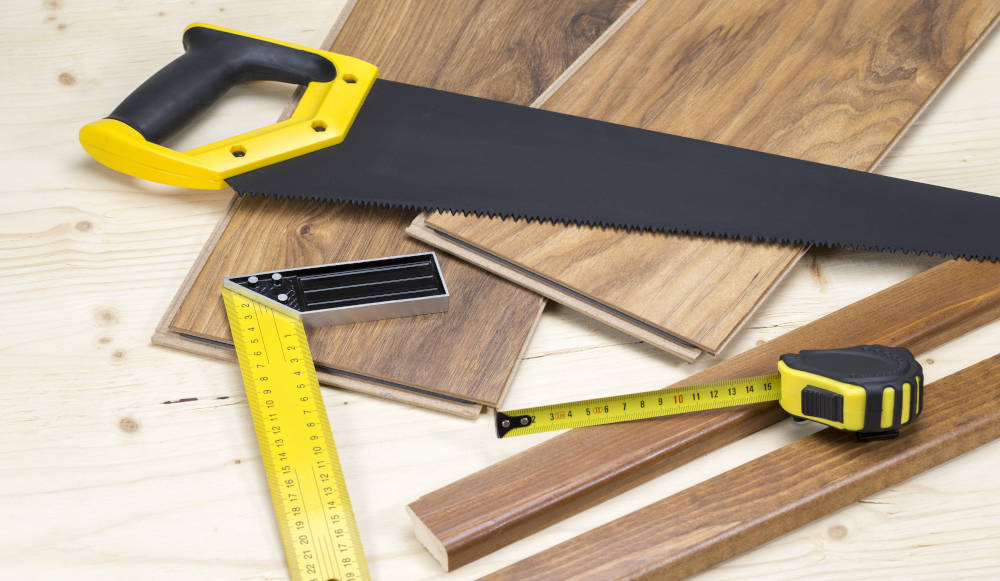Cost to Install Laminate Flooring – 2025 Price Calculator
Laminate offers the beauty of hardwood flooring, often at a fraction of the cost. In addition, its ease of installation means that most homeowners opt to tackle a laminate installation themselves.
It comes in many different styles, colors, and textures, and can even be made to look like tile or marble flooring. The cost of a laminate floor installation depends on the cost of the material, supplies, labor, floor removal, and trim work.
Laminate Flooring Cost Calculator
Enter the size of your project and select the material and services you're interested in to estimate the cost of the project using 2025 price data. Continue reading below to learn more about what to expect for a laminate flooring project.
On this page:
- How Much Does Laminate Flooring Cost?
- Material Pricing
- Installation Labor Costs
- Other Installation Costs
- Why Laminate?
- How to Save Money on Your Flooring Installation
- Is the Cheapest Laminate Worth It?
- Laminate Flooring Abrasion Criteria Ratings
- AC Rating Descriptions
- Major Laminate Flooring Manufacturers
How Much Does Laminate Flooring Cost?
Homeowners often spend $1,500 to $4,000 to install a new laminate floor, though the price varies for every project. Project size, material pricing, labor, supplies, floor removal, furniture moving, and tool rental can all affect the cost of the project.
The best way to get an accurate price for a new floor is to get a few quotes from local flooring professionals. We’ll also go more in-depth into what impacts the price of a laminate floor below.

Material Pricing
Laminate flooring ranges in cost from $.75 to $2 per sq. ft. for thinner products and $2 to $4 per sq. ft. for thicker, premium products. Laminate ranges from 6mm to 15mm in thickness, and thicker products typically cost more but offer a more durable and substantial floor.
According to BuildDirect, walking on a thicker laminate floor feels more like walking on a solid wood floor. Keep in mind that a thicker product may also be more difficult to install and may present installation challenges around doors and appliances.
Find out how much laminate you will need for your project and estimate your material cost using our flooring calculator.
We also recommend ordering at least 10% extra material to account for cuts and waste. If you install your laminate in a pattern, you will need an additional 5% to 10% more to account for added cuts.
Installation Labor Costs
Labor to install a laminate floor usually runs $2 to $7 per square foot. The cost of labor will vary based on the complexity of the project and variances in the local labor rate.
Very thin or very thick laminates will have higher labor rates. If you need a separate underlayment, keep in mind that this will also increase your labor rate.
For example, a room with a complex layout that requires a lot of cuts will take longer to install than a square room, so the cost per sq. ft. will be higher. Find out how much flooring costs to install in your area.
Other Installation Costs
There are other factors that affect the cost of laminate floor installation. Laminate floors need an underlayment and vapor barrier between the subfloor and the new floor. Note that some flooring product comes with the underlayment attached and don’t require purchasing a separate product.
To install laminate planks or tiles, the floor must be almost perfectly level. In many homes, especially older homes, there are dips and high spots in the floor that will affect the quality of the installation. Leveling the floor will add to the cost of the installation.
Costs to level a floor average $3 to $5 per square foot, but if you need a new subfloor, this cost can jump to $12 per square foot.
There is a cost associated with removing and disposing of an existing floor, so consider that cost when estimating your project. Removing carpet, for example, can cost up to $1 per sq. ft. If you choose to take this task on yourself, remember that the floor still needs to be taken to the dump.
Homeowners often overlook the challenge of moving furniture for a flooring project. All furniture needs to be moved for the project. You may need help moving furniture or even possibly storing it temporarily if you don’t have space to store it locally.
Why Laminate?
Laminate often looks just as beautiful as a real hardwood floor but usually costs much less. Laminate also has a factory finish that does not require refinishing.
On top of that, laminate is easier to install than hardwood since it is a floating floor that does not need to be nailed or glued down like typical hardwood products, and it does not need to be finished.
Keep in mind, though, that laminate is very susceptible to moisture. Do not install it below grade or in wet areas. You must also leave an expansion gap around the perimeter of the installation to prevent buckling, humping, and warping due to humidity.
Laminate does not last as long as hardwood – roughly 20 years on average – and thinner laminates may scratch and dent easily.
How to Save Money on Your Flooring Installation
There are several ways to save some money on your laminate flooring. First, when a supply of laminate is discontinued and no longer manufactured, the remaining supplies may be sold at a discount.

Overstock resellers often sell these types of products. Note that it may be difficult to get additional material later if needed. For this reason, it’s recommended that you order a little extra to keep on hand in case of needed future repairs.
Keep an eye out for promotions and sales, as some sellers occasionally offer discounts on flooring materials and installation.
Another way to save some money on your floor is to try installing it yourself. Many homeowners opt to install a laminate floor themselves, pocketing the cost of labor.
Finally, get three installation estimates to find the most competitive price.
Is the Cheapest Laminate Worth It?
Many sellers offer budget products at a significantly lower cost than average, which is very attractive from a budget perspective. Often these products may be just fine, but consider that they may have some drawbacks.
Budget laminate is usually thinner, which may not feel as sturdy when walking on it. Some products may be more difficult to install, adding time and/or cost to the project.
Budget laminate may not have a high AC rating and may wear more quickly than more expensive flooring. With that said, budget flooring may be perfect for your project, so don’t rule it out.
Budget laminates with a low AC rating may be a good choice for low-traffic areas like guest bedrooms. However, they don’t do well with pets as their claws can easily scratch it. If you have pets in the home, get the highest quality flooring you can afford to ensure it lasts.
Laminate Flooring Abrasion Criteria Ratings
The European Producers of Laminate Flooring developed an Abrasion Criteria, or AC, rating. This rating is used to indicate the strength and durability of flooring products. Specifically, the ratings indicate a product’s resistance to impacts and abrasion. The ratings range from AC1 to AC5, with the higher numbers being a better rating.
AC Rating Descriptions
| Rating | Description |
|---|---|
| AC1 | Light residential use in areas with infrequent traffic, ie. in a bedroom |
| AC2 | General residential use in areas with moderate foot traffic, ie. in a living room or dining room |
| AC3 | Heavy residential use or light commercial use, ie. in a kitchen or a small office space |
| AC4 | General commercial use with moderate foot traffic, ie. an office space |
| AC5 | Heavy Commercial use in high-traffic areas, ie. a department store or restaurant |
Major Laminate Flooring Manufacturers
There are several companies that manufacture laminate flooring. Major manufacturers include Pergo, Armstrong, and Mannington. Pergo created the concept of laminate flooring and continues to be one of the most popular brands for flooring today.
All pricing information on this page is based on average industry costs, and is subject to variance for project-specific materials, labor rates, and requirements.


